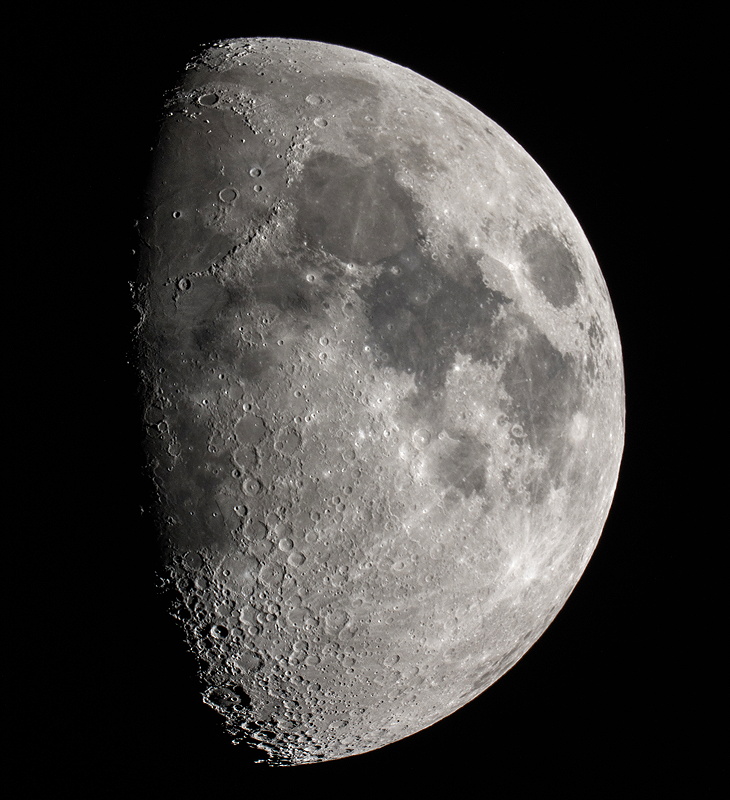More Moon Imaging
Posted: 31 August 2017
|
Open: Wednesday, 30 August 2017, 1851 MST Temperature: 82°F |
Session: 1138 Conditions: Mostly clear, hazy |
Equipment Used:
12" f/8 LX600 w/StarLock
2" 24mm UWA eyepiece
Camera:
D7200 DSLR
1852 MST: sunset. 1858 MST: LX600 ON, StarLock OFF, High Precision OFF.
1900 MST: viewed Jupiter, low in the southwestern sky, 102X. Seeing was bad, but the four Galilean Moons were visible.
1904 MST: viewed the Moon, 102X. Seeing not good.
Began preparing the D7200 DSLR for imaging. Mounted the DSLR at prime focus + focal reducer. 1935 MST: began imaging the Moon.
This is a 1/800sec, ISO 400, White Balance Auto, photo of the Moon:

Focused on the star Antares using the Bahtinov Mask and locked the primary mirror focus.
1946 MST: Wi-Fi ON. Used SkySafari 5 Pro to GOTO Asteroid (3122) Florence. StarLock ON. Did some imaging of the star field, prime focus + focal reducer, in the hopes of seeing some asteroid movement. None was seen on the DSLR screen. And none was detected during post-processing of the images.
2010 MST: Wi-Fi OFF. StarLock OFF. Removed the camera.
Tried detecting the asteroid by looking for movement, 102X. No movement detected. Perhaps SkySafari has an error. Will enter the asteroid's TLE in the AutoStar on the next session.
2028 MST: viewed Saturn, 102X. Four moons were visible.
2032 MST: LX600 OFF.
|
Close: Wednesday, 30 August 2017, 2043 MST Temperature: 78°F |
Session Length: 1h 52m Conditions: Clear |
Comments are welcome using Email. Twitter users can use the button below to tweet this report to your followers. Thanks.
Cassiopeia Observatory Home Page
Copyright ©2017 Michael L. Weasner / mweasner@me.com
URL = http://www.weasner.com/co/Reports/2017/08/31/index.html
